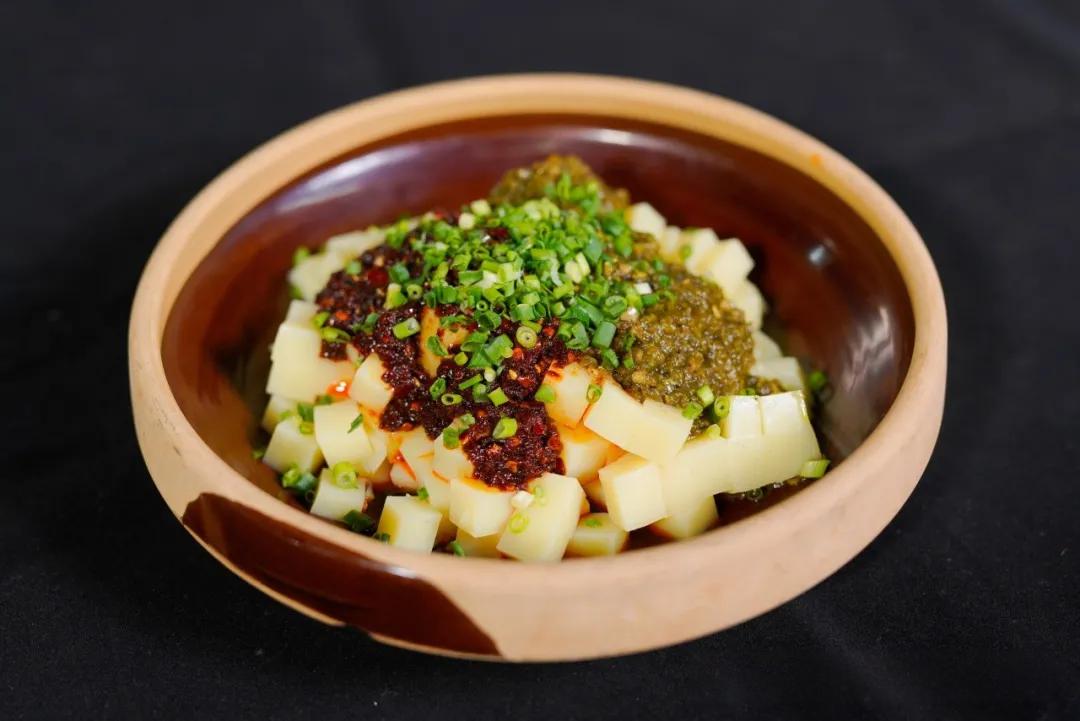1、Hongan Pickled Fish
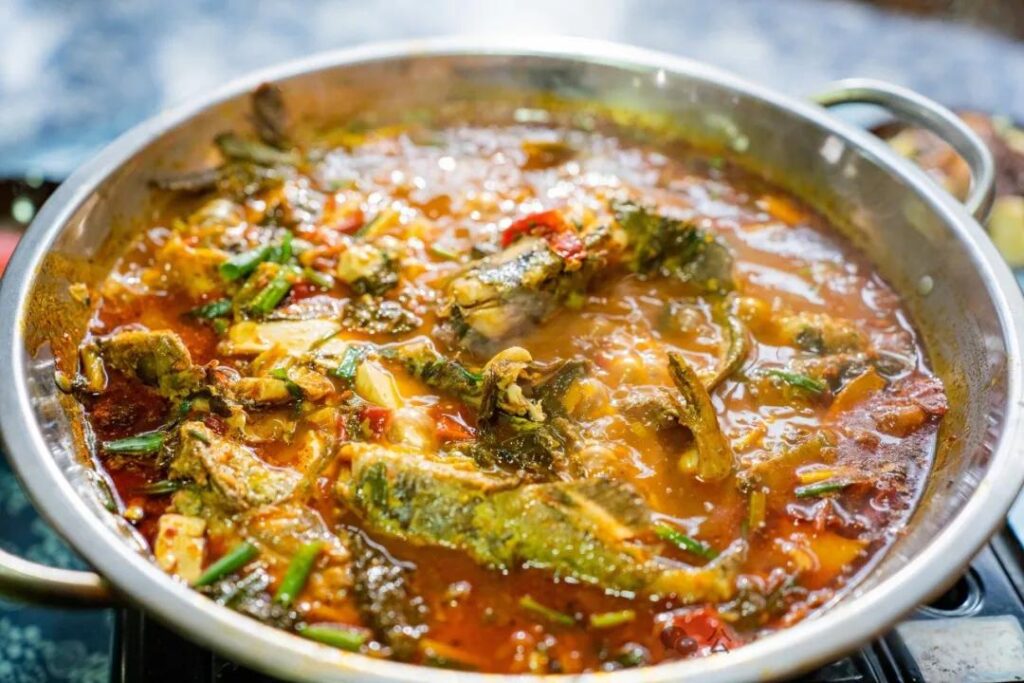
Hong’an pickled fish is made from fish from Hunan, tofu from Guizhou, and pickled vegetables from Chongqing. It is a culmination of the dietary customs of the three border areas of Chongqing, Hunan, and Guizhou. It has a unique cooking method, fresh color, rich aroma, and a delicious sour and spicy taste.
2、Shidi Tofu Fish
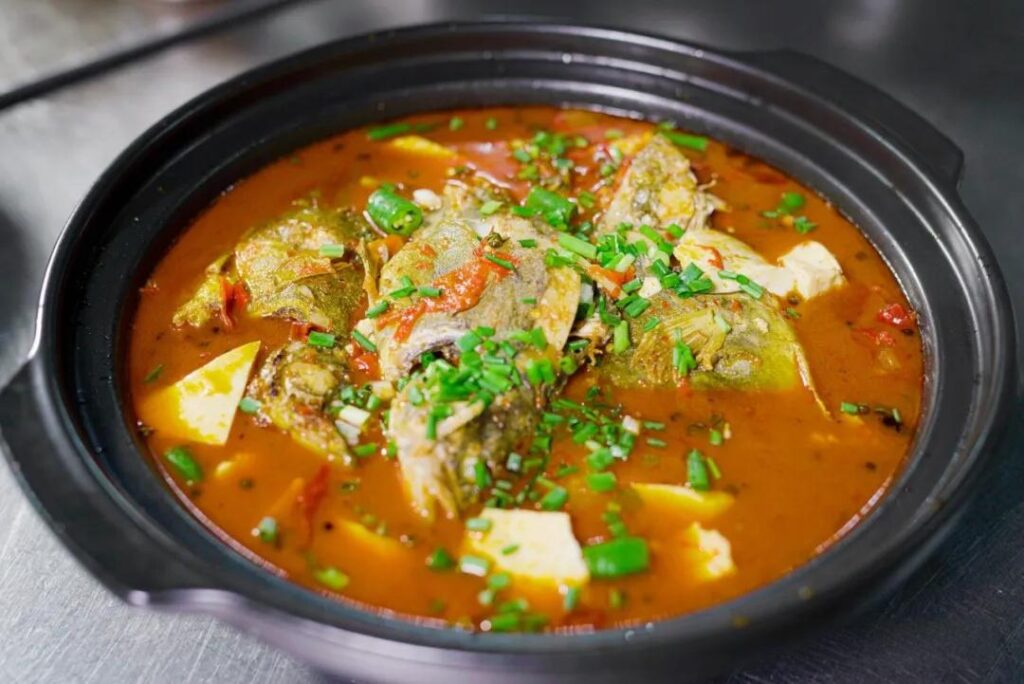
Shiti Tofu Fish, with tofu and fish as the main ingredients, is named after the excellent quality of Shiti tofu.
3、Simmering stove
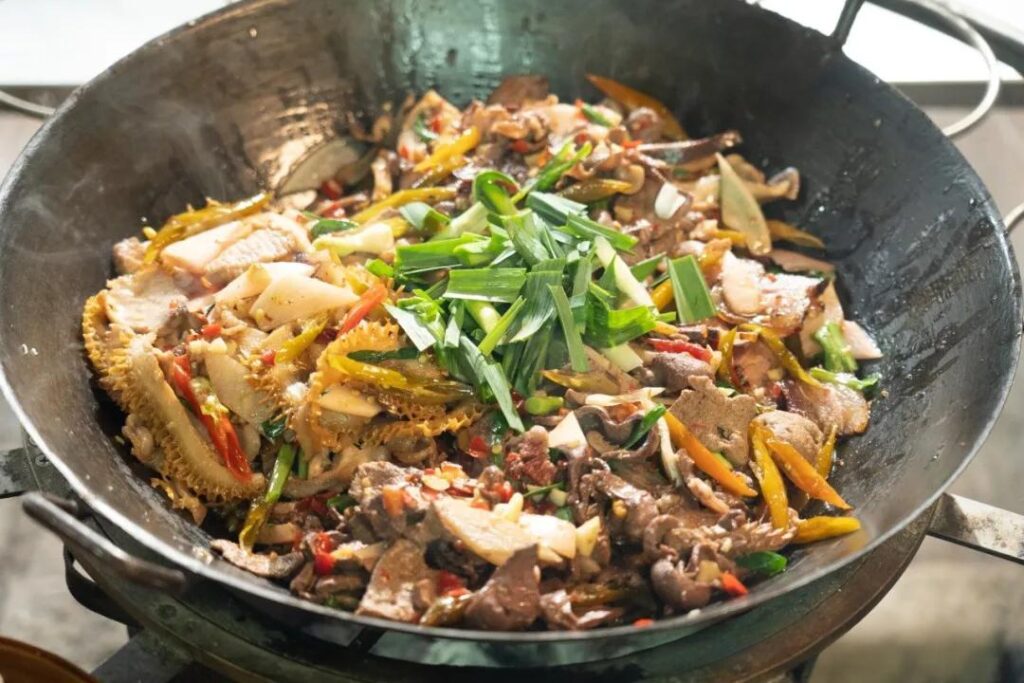
Simmering in the stove is a unique way for the people of Xiushan to eat. A pot is placed on a fire pit or a wood stove, and a spicy soup base is made with pork belly, pickled radish, pickled chili peppers, Sichuan peppercorns, etc. Then vegetables, pig blood, tofu, oil cakes and other dishes are prepared. The family or relatives and friends sit around it, chatting, drinking, cooking and eating.
4、Flavored Rice Tofu
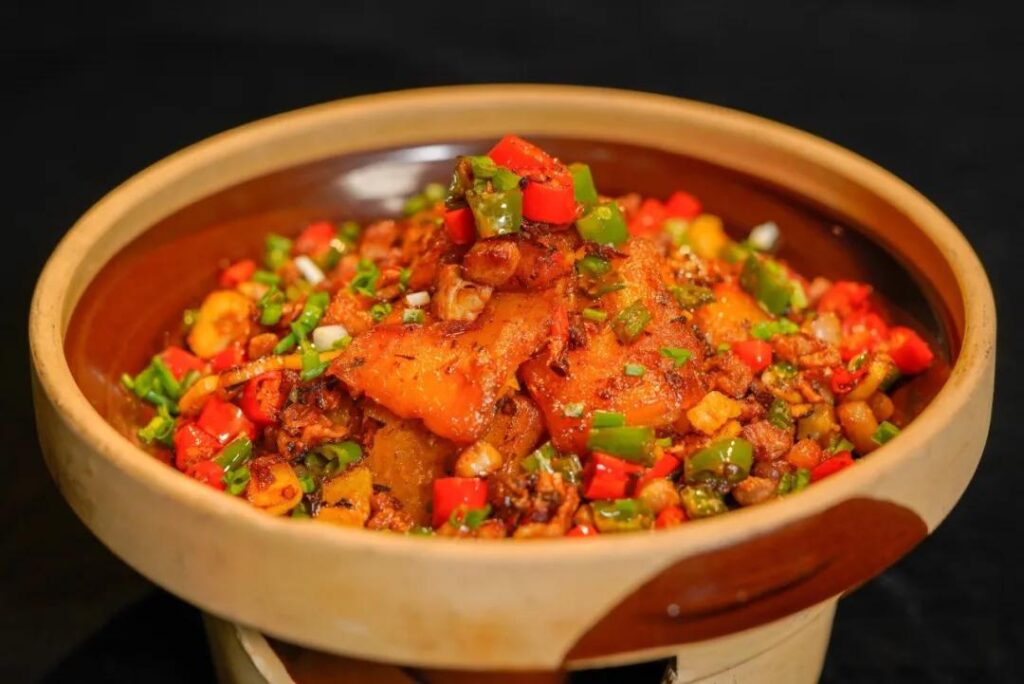
Rice tofu is a very representative local snack in Xiushan and surrounding areas. It can be eaten in a variety of ways. One of them is to cut it into triangular slices and fry it, which has a unique flavor.
5、Sheep feet feet
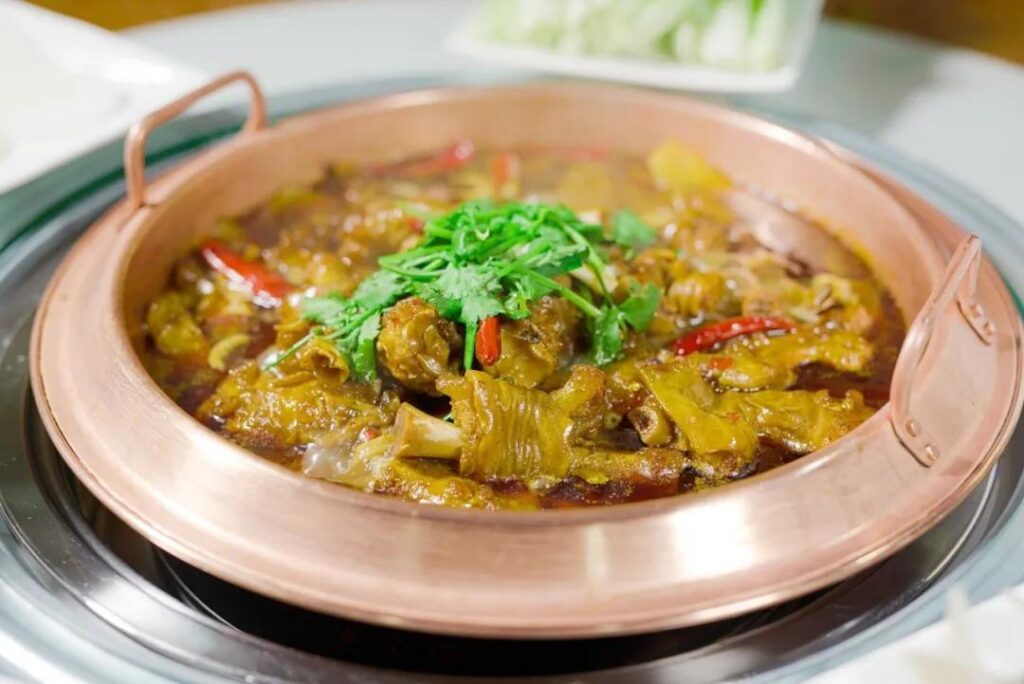
The raw materials of goat feet are selected from the fine goats in Wuling Mountain area, and they are manually dehaired and cleaned, and produced by combining traditional cooking techniques with modern standardized processes, and are made through 24 processes. They are soft but not loose, fragrant and glutinous without smelling mutton, and chewy and delicious.
6、Stewed Duck with Polygonatum
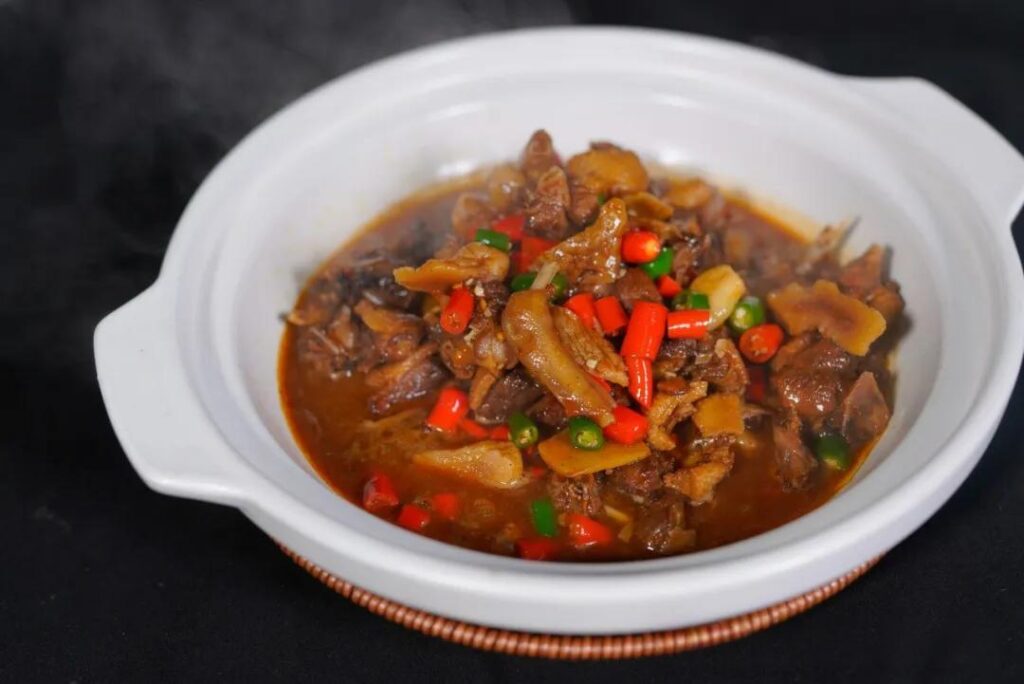
Huangjing stewed duck is made with Xiushan duck as the main ingredient, and seasoned with Polygonatum multiflorum, green and red chili peppers, etc. It is made through multiple processes such as frying, boiling, and stewing. It has a good color, aroma, and taste, and the meat is tender and not dry, smooth and delicious. It is an authentic Xiushan specialty landmark dish.
7、Yajiang Beef Offal Soup Pot

Yajiang Beef Offal Soup Pot is based on an ancestral recipe, with beef belly as the main ingredient, using the original method, returning to the original. It has beautiful color, rich nutrition, tender texture, fresh taste, sour and spicy.
8、Pingkai Green Pepper Duck
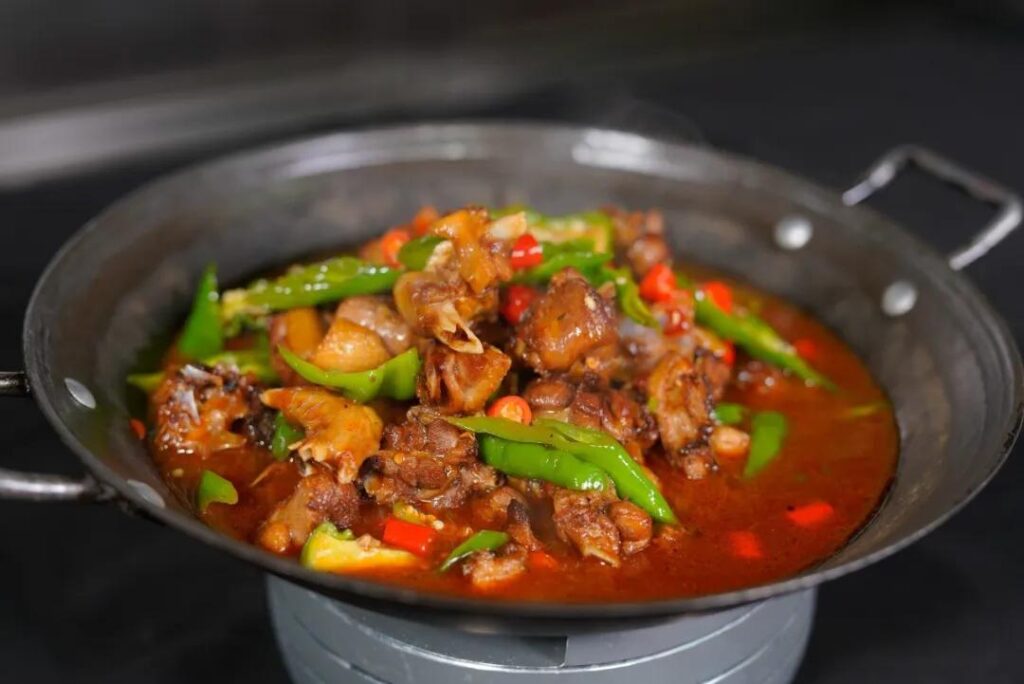
Pingkai Green Pepper and Duck is an improvement on the traditional Miao dish “Young Ginger Duck”. The main ingredients are green pepper, young ginger and Miao duck. Miao duck is a local duck raised by local Miao farmers, with excellent meat quality and authentic taste.
9、Rana sutchuenensis
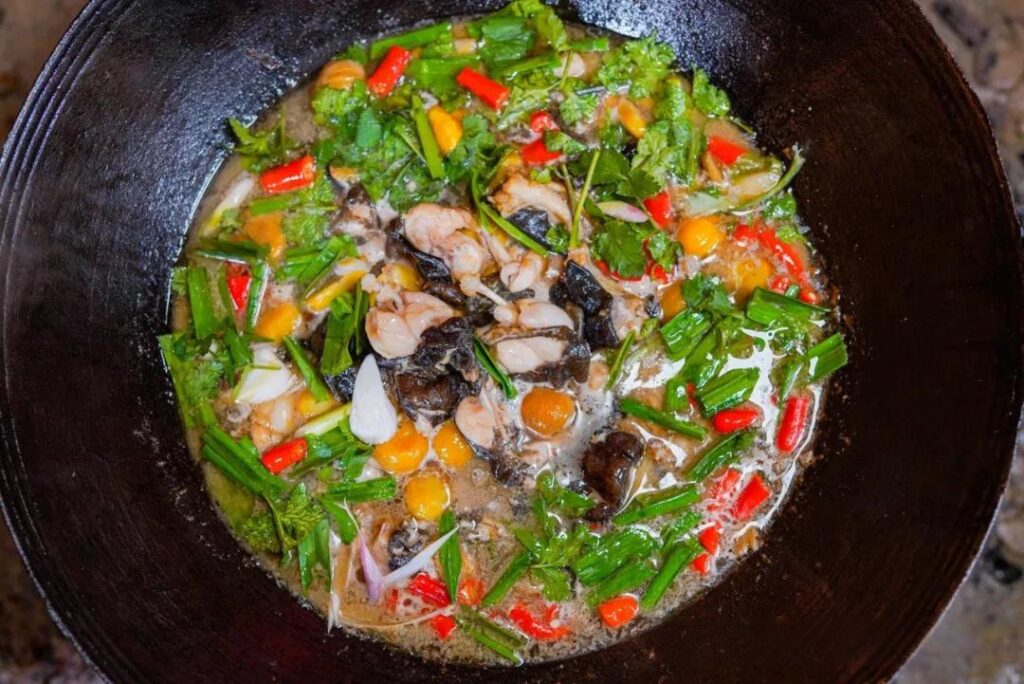
Gaotian Qingquan Stone Frog has both extremely high medicinal value and edible value. Through simple cooking, you can taste a delicious dish with tender meat, delicious taste and rich nutrition.
10、Sichuan River Cured Pork Knuckle
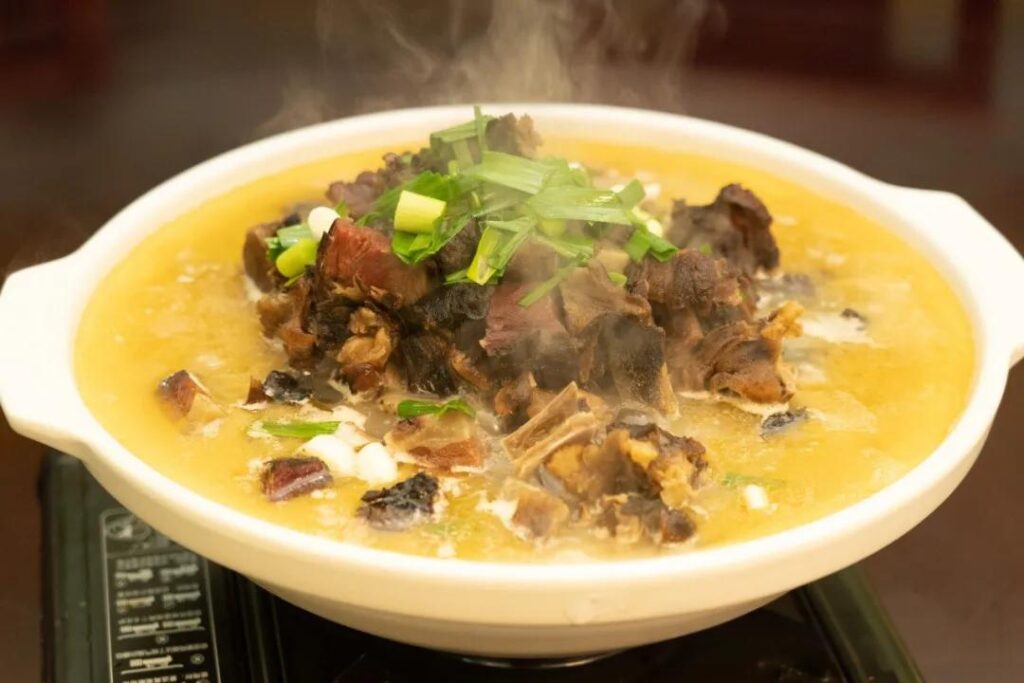
Chuanhegai cured pig’s feet are made with traditional techniques. The washed pig’s feet are first marinated with salt and spices, and then smoked with cypress branches and leaves. When eating, the method is also relatively simple. Just add appropriate amounts of ginger, onions, garlic and seasonings, add side dishes and stew until they are tasty.
11、Shiye Crispy Pork Trotter
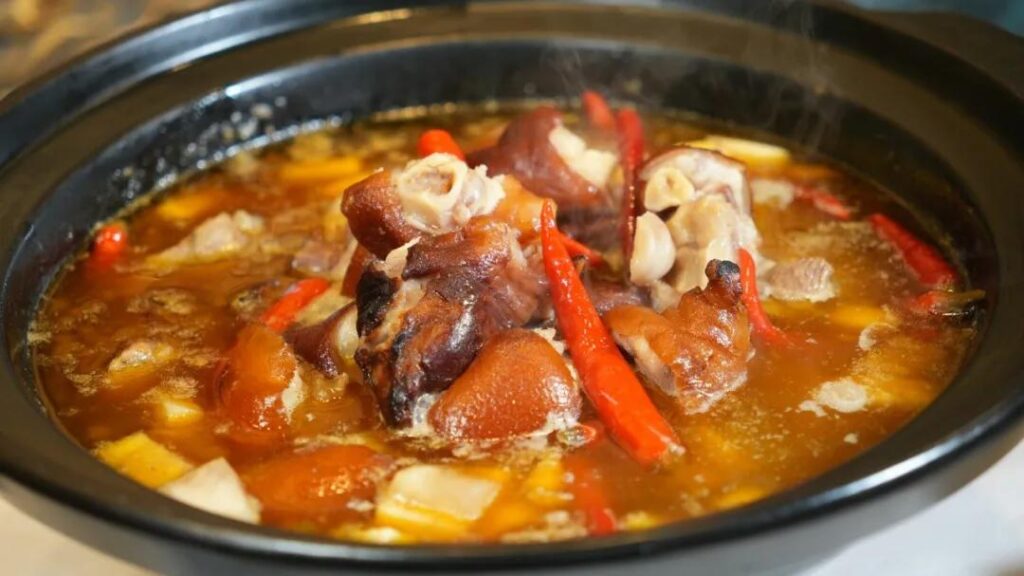
Shiye Crispy Pig’s Feet uses fresh pig’s feet as the main ingredient. The pig’s feet are defatted through an extremely sophisticated production method, and then fried or baked until the pig skin is crispy. When eating, add the corresponding seasonings and stew.
12、Songnong Fish
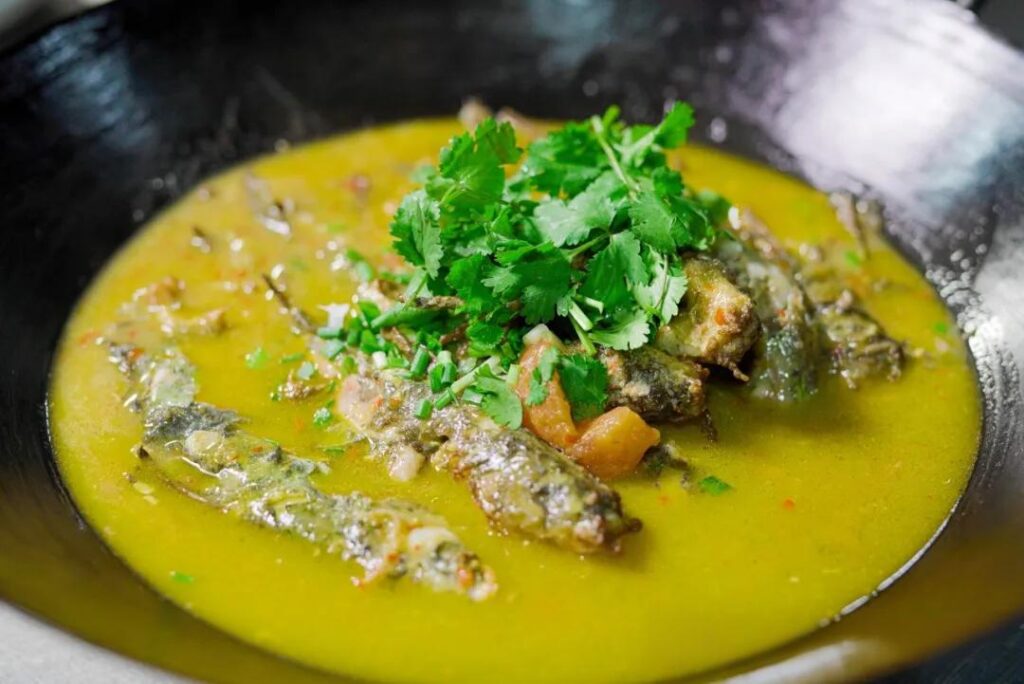
Tujia Muhu Fish is a local specialty of the Songnong Tujia people. The local Tujia people live along the river and have been fishing for generations. Their main food is corn. In the hot summer, when people are tired and exhausted, and have poor appetite, they mix cornmeal and chili powder and ferment them in earthen jars to make sour and spicy “sea pepper noodles”. Sea pepper noodles are not only a dish for local people to eat with rice, but also the main condiment for making Tujia Muhu Fish. To make Tujia Muhu Fish, first fry the fresh fish until it is crispy on the outside and tender on the inside. After adding soup and boiling, add sea pepper noodles into the soup in batches until the fish soup gradually thickens and becomes a paste.
13、Tujia New Year Meat
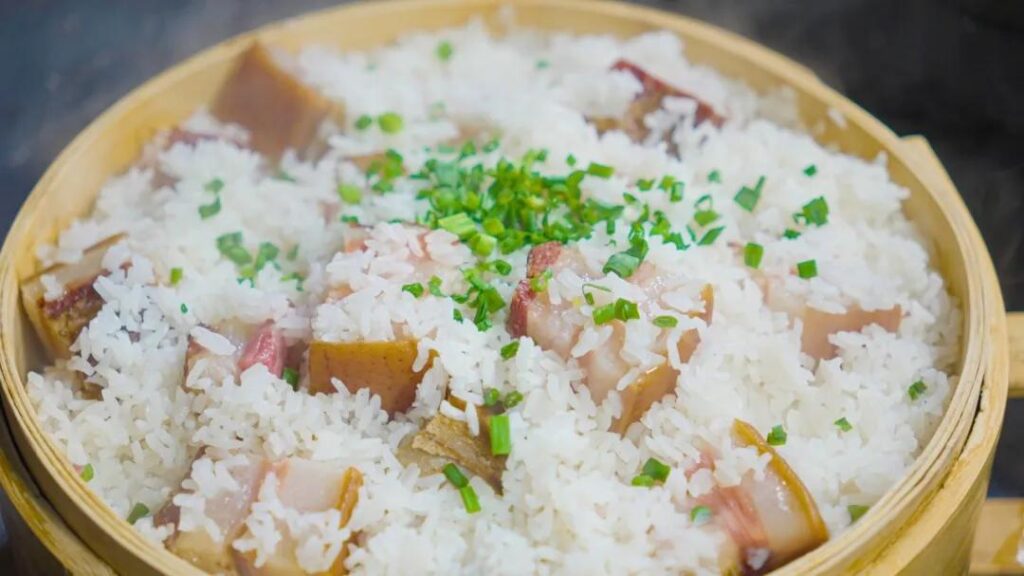
Tujia New Year Meat is an indispensable dish for the local Tujia people during festivals. With three-line meat and glutinous rice as the main ingredients, select an appropriate amount of three-line meat and cut it into rectangles, each about three inches long and two to half a pound in weight. Fry salt, peppercorns, etc. until fragrant, and marinate the three-line meat with white wine. After the meat is seasoned, remove the excess salt and peppercorns, hang it in a ventilated place with an iron hook, and take it out after the surface of the meat is dry and put it on a dish, and cover it with blanched glutinous rice. Then put it in a wooden steamer and steam it until it is cooked, and then cover it with a large bowl to prevent it from cooling. When eating, turn the dish and the large bowl over at the same time, and take out the dish.
14、Stuffed tofu
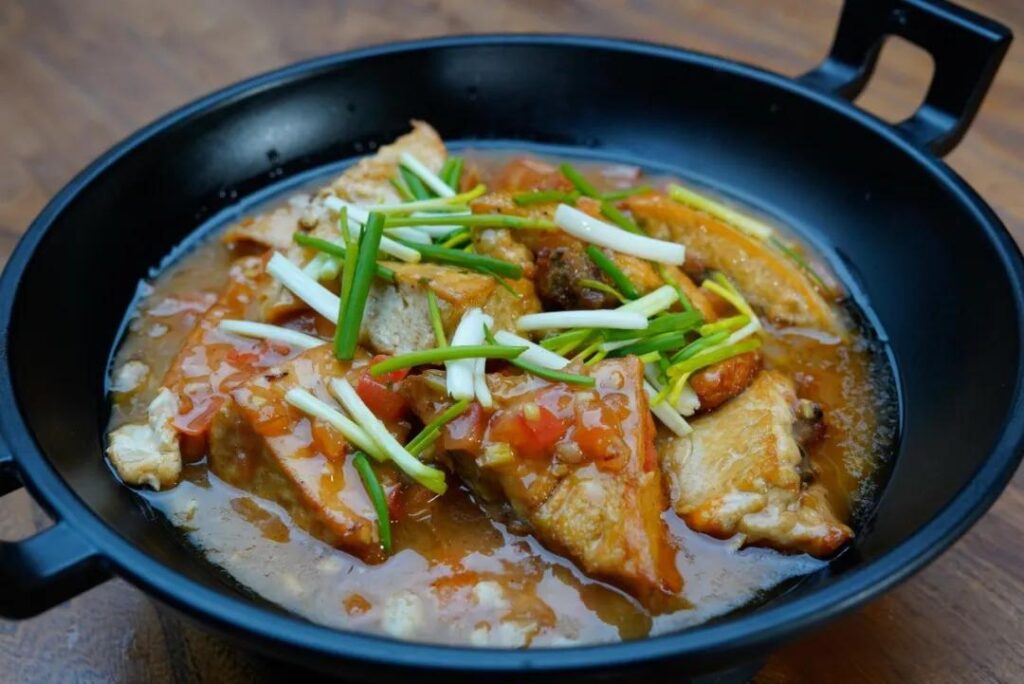
Xiushan stuffed tofu uses stone-ground tofu as the main ingredient. The preparation method is to chop the fresh meat and mix it with various condiments. Then cut the tofu into triangular pieces, make a small cut on the side, fill it with meat filling, and then fry it with rapeseed oil until it turns yellow, then add water and cook it. It has a fresh and fragrant taste and is rich in nutrition.
15、Sour pepper lamb
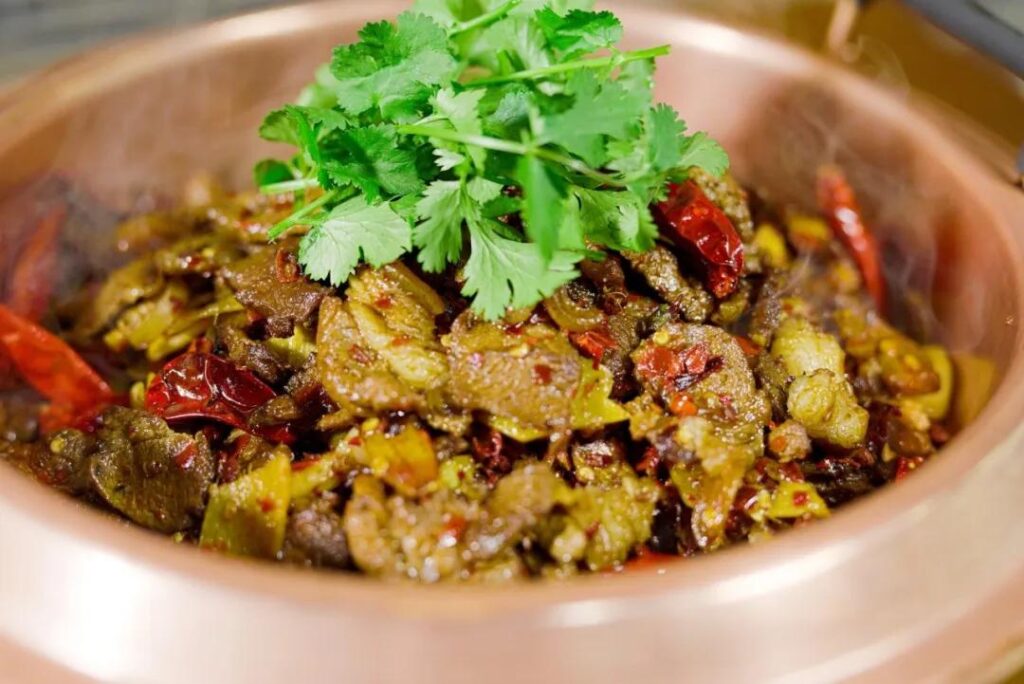
Xiushan hot and sour mutton is made with exquisite ingredients and has its own system. It is cooked with ecological goats from Xiushan and Wuling Mountain area, white radishes from farmers, sour and vinegar peppers pickled in traditional methods, and other ingredients, forming the unique hot and sour flavor of Xiushan. Xiushan hot and sour mutton is not fishy, not smelly, and not woody. It is a combination of numbing, spicy, sour, and fragrant. It is rich in nutrition, warms the yang, strengthens the body, and nourishes and keeps out the cold.
16、Fungus pot
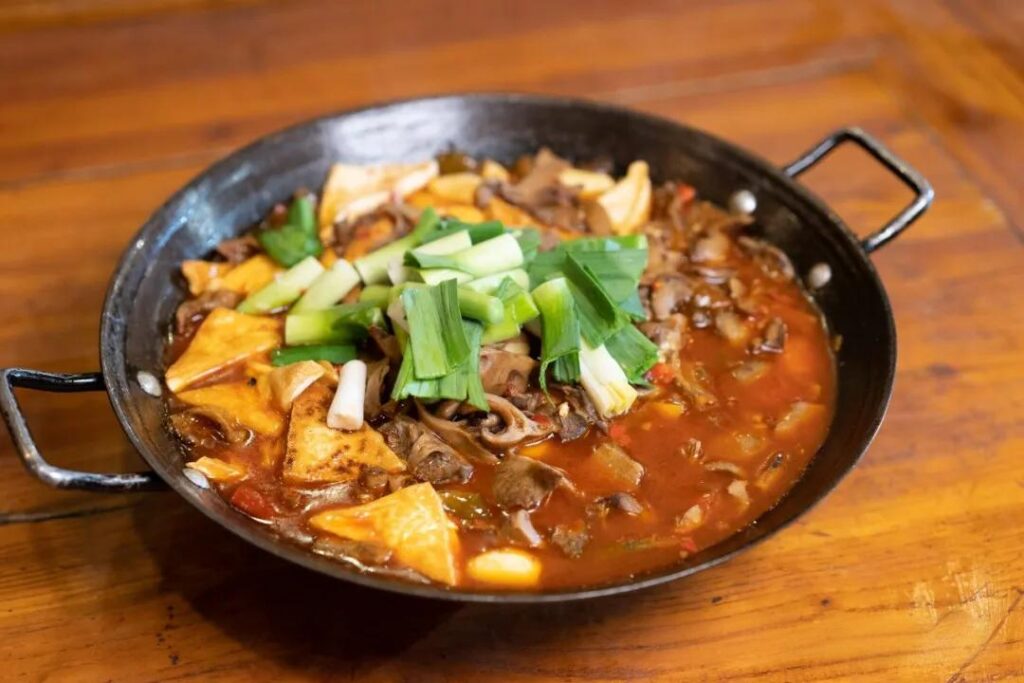
Xiushan is a mountainous area with many fir forests, which is very easy to breed in summer and autumn. Most mushrooms grow overnight in hot and rainy weather, and are crisp and tender with a fresh and fragrant taste. The mushroom pot perfectly combines wild mushrooms and domestic pork, and its unique flavor is a must-try.
17、Fish head with pickled pepper
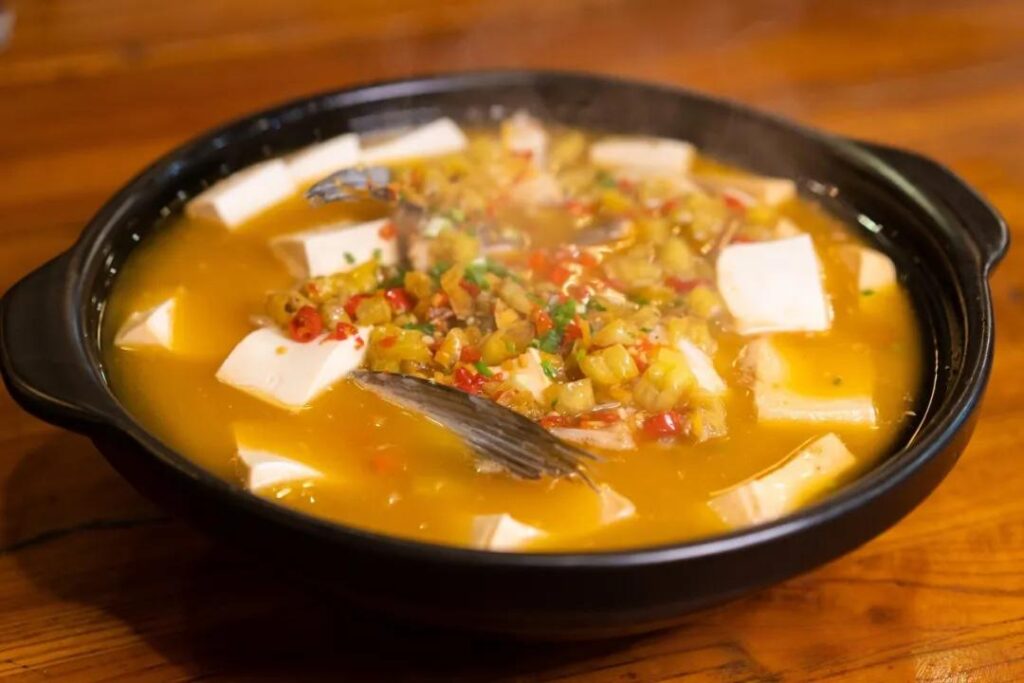
The pickled pepper is the most favorite traditional food of Xiushan people. It is made by chopped raw red pepper and pickled with salt. It has a mellow sour and spicy taste. It is not only a common home-cooked dish, but also a common condiment. The pickled pepper fish head made with pickled pepper and silver carp head has a rich soup, bright color and unique flavor.
18、Border Town Braised Duck
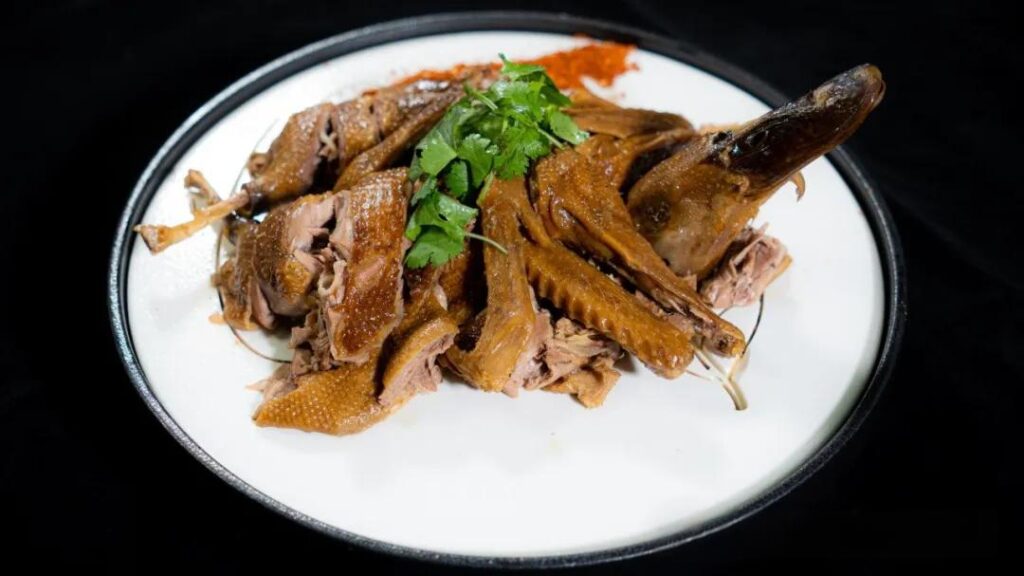
Xiushan traditional stewed dishes belong to Sichuan stewed dishes, mostly with red stew. Biancheng stewed duck is made with local farm duck as the main raw material and stewed with secret stewing ingredients. It is rich in flavor, crispy, soft and tender, salty and delicious, fat but not greasy. Whether it is hot or cold, it will leave a lingering fragrance in your mouth.
19、Rice tofu

Rice tofu is made by grinding local indica rice into slurry, mixing it with lime water and serving it with a secret chili sauce. It has become the most common snack for Xiushan people after meals and when entertaining guests. It is the most geographically iconic local snack in Xiushan.
20、Oil cake
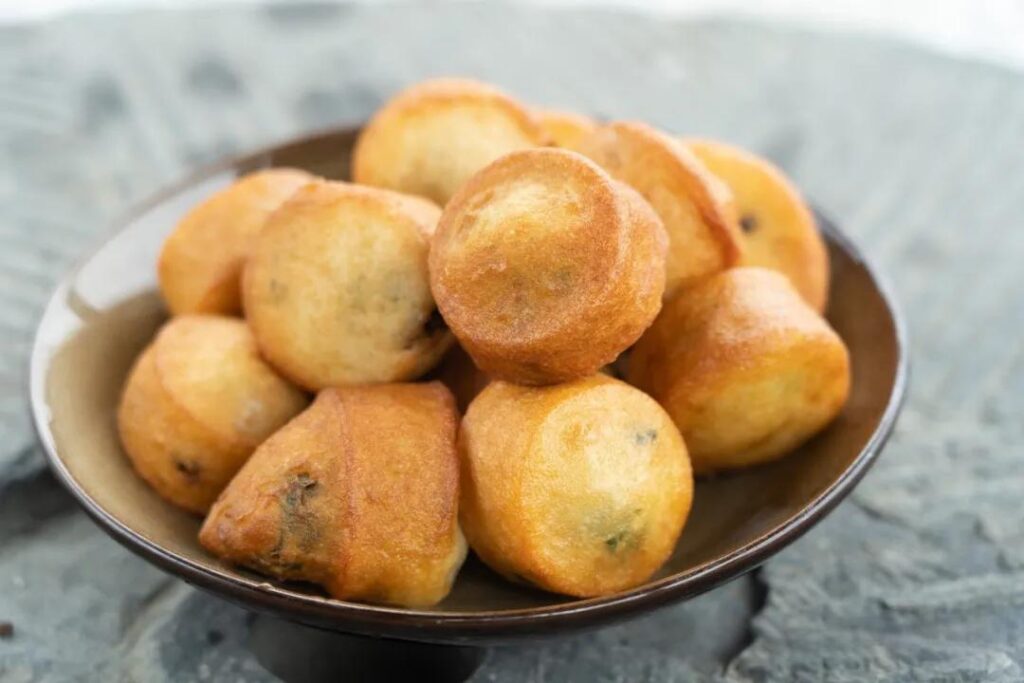
Youbaba is a kind of food made by grinding rice and soybeans in a certain proportion and frying them in a mold. It has a unique color, aroma and taste. In Xiushan, almost every household knows how to fry Youbaba. The process of frying Youbaba is relatively simple and also suits the taste of local people. Youbaba is round, symbolizing “perfection” and golden in color, symbolizing “wealth”, so Youbaba is one of the most popular foods for Xiushan people during festivals.
21、March 3 cake

The third day of the third lunar month is called the “Shangsi Festival” in ancient times. It is a festival for washing away dirt, eliminating disasters and warding off evil spirits. Xiushan people believe that all things have spirits. In addition, the local mountains are high and the valleys are deep. The climate is hot and humid, and there are many snakes, insects, poisonous miasma. Therefore, wild vegetables such as wild wormwood and wild onions are mixed with glutinous rice flour to make cakes to bring good luck and fortune, avoid disasters and epidemics, and eliminate diseases.
22、Beef Noodles
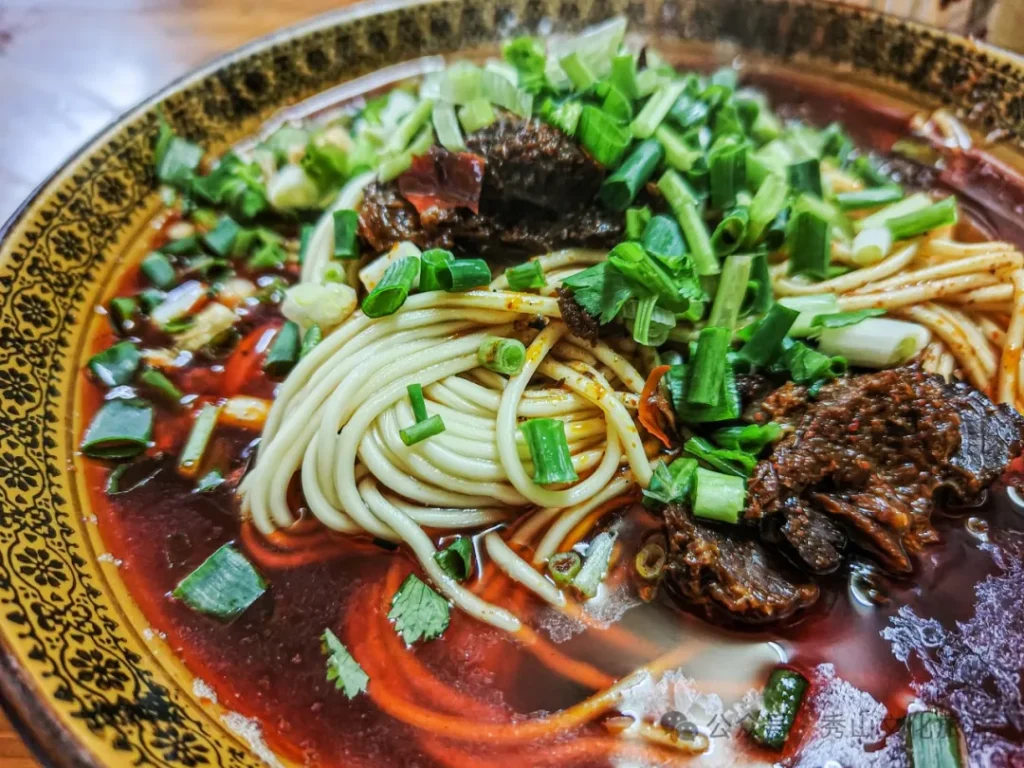
Beef noodles, the main ingredients are beef and noodles made by local noodle shops, and its characteristic lies in the making technique of beef sauce. Xiushan people like to have beef noodles for breakfast, and when eating beef noodles, they like to drink two taels of wine, so it is called drinking early wine. To this day, “going to the early market and drinking early wine” is still widely popular in Xiushan area, becoming a major landscape of Xiushan food customs.
23、Community Meal
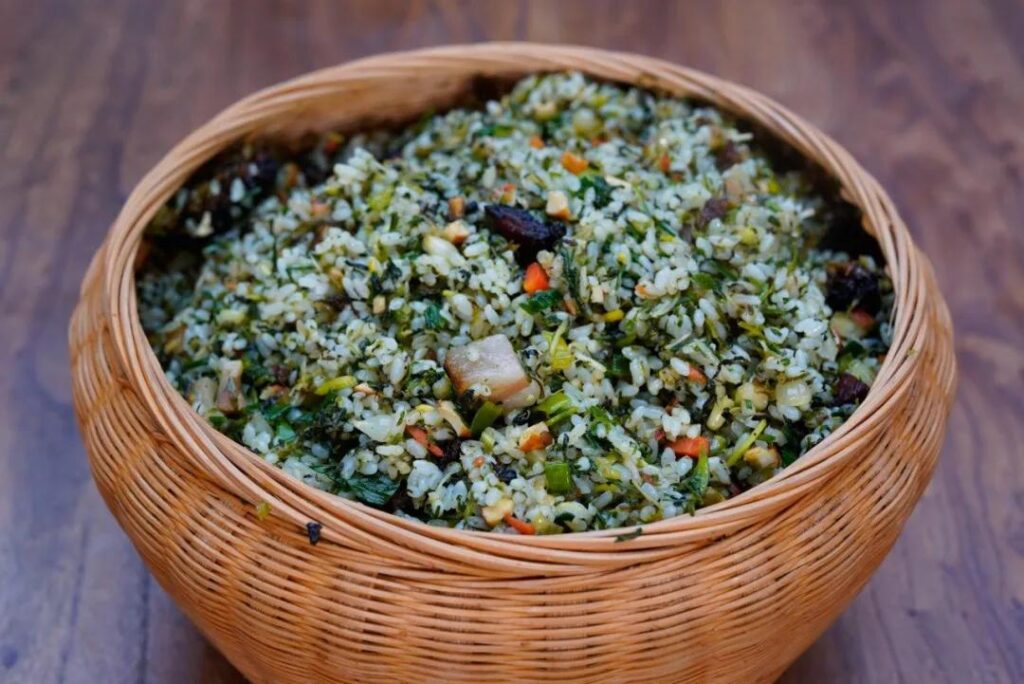
Shefan is a kind of food used by the Tujia, Miao, Han and other ethnic groups in Xiushan to worship the gods and grain. Eating Shefan is mainly done on Sheri (the fifth Wu day after the beginning of spring), which is commonly known as “Guoshe”. Local people make Shefan with rice, wild vegetables, bacon, tofu and other ingredients, and share it with each other. They use wild vegetables to detoxify and seek good health. It still has a strong folk atmosphere.
24、Chicken Soup
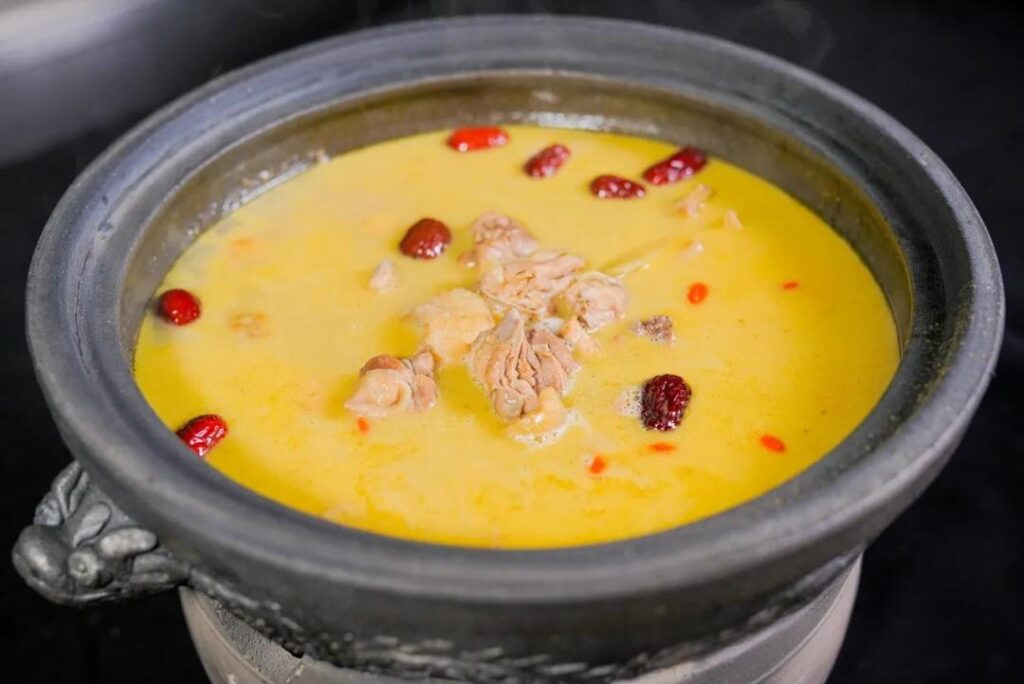
The local chicken soup is made with high-quality Xiushan local chicken as the main ingredient. It is simmered over low heat with the addition of old ginger, peppercorns, salt, etc. and stewed for several hours. The soup is white and thick with a pure aroma.
25、Medicinal Chicken
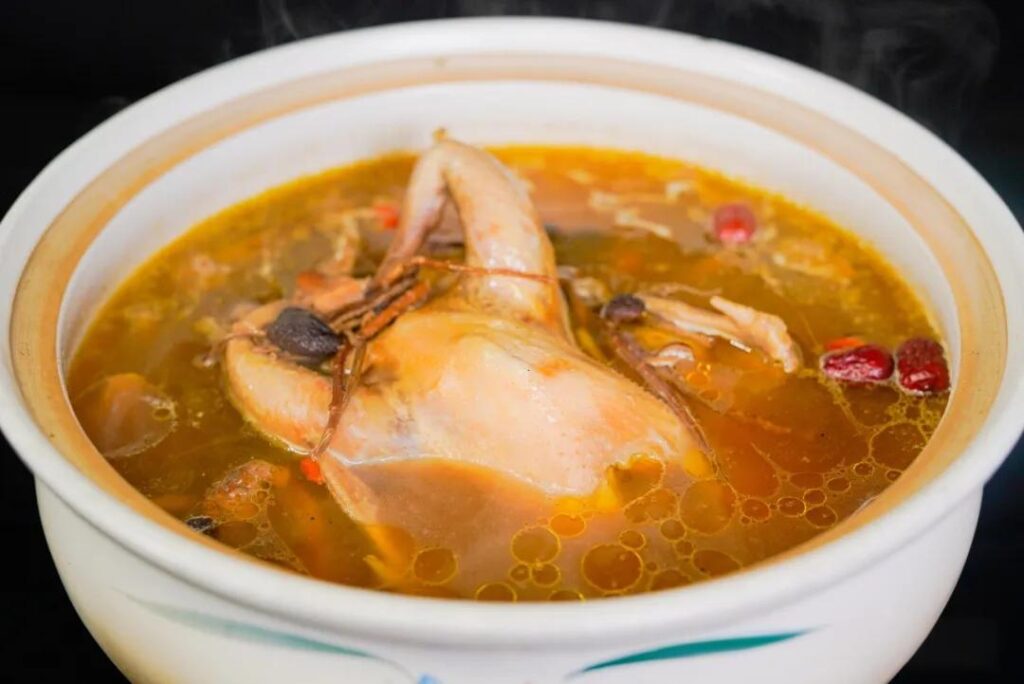
Medicinal diet, that is, food made with medicine, is a way of keeping healthy in traditional Chinese food culture, also known as food therapy. Medicinal chicken is mainly made with local chicken as the main ingredient, with Chinese polygonatum, sand ginger and other medicinal materials added, and an appropriate amount of water, stewed until the chicken is boneless, and then served with other spices and sauces.

